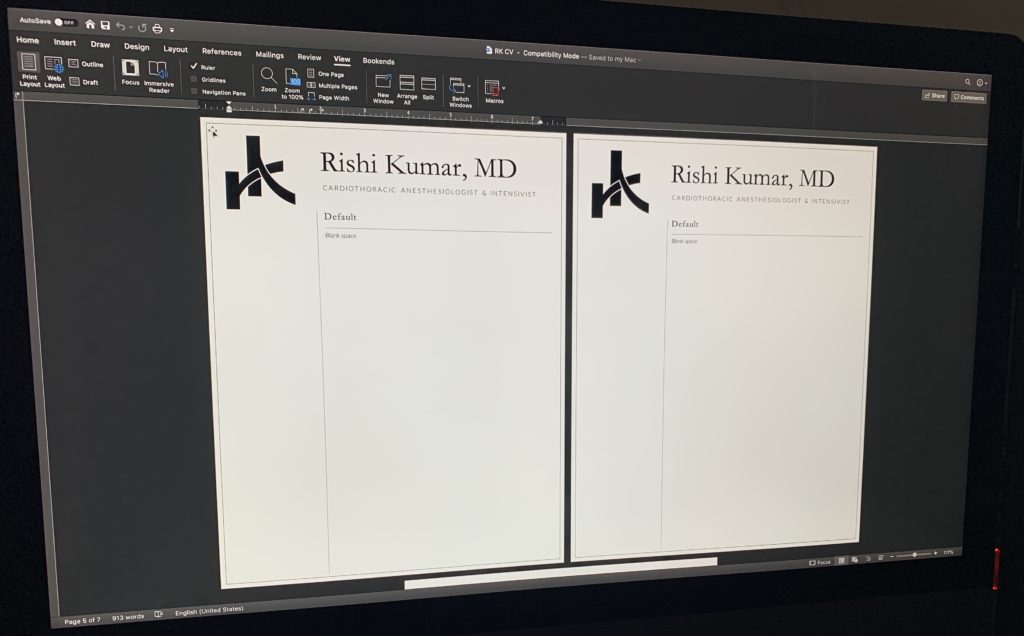A curriculum vitae (CV) catalogs your working career (including accolades, presentations, publications, education, extracurriculars, etc.) in a chronological order with detail. I think about a résumé as a snapshot of the CV. Typically it’s less than a page and only contains highly relevant points which differentiate you from other applicants.

In either case, it’s important to have easy access to an updated copy of both for volunteering positions, job applications, and especially higher level education applications. I’ll provide some tips about keeping an updated CV knowing that the same tips apply in generating a résumé based on the position you’re seeking.
- Find a solid template to serve as the foundation. Etsy has some amazing templates to choose from for less than $15 – a minor investment when it comes to refining your professional portfolio.
- People get overwhelmed with what to include in their CV/résumé – just start writing! It’s much easier to parse content later.
- Make sure you are using a consistent format (especially with dates). Don’t say “March 2015” in one section and “3/5/2015” in another. Uniformity conveys organized structure.
- Have a copy of your document on a cloud storage (ie, iCloud Drive or Office 365), so you can update it on-the-go with new presentations, publications, jobs, etc.
- Whenever you modify your CV, save a copy as a portable document format (PDF) in the same folder too. This is what should be shared with others as all formatting (ie, type faces) will be preserved regardless of the device and operating system.
- Needless to say… proofread and revise constantly! Have a friend look over it too!
Specifically for my career as a physician, I have the following sections:
- Training
- Licenses & Certifications
- Academic Appointments
- Professional Organizations
- Professional Activities (intramural and extramural)
- Research Supervision/Mentorship
- Grants & Funding
- Honors & Awards
- Publications (peer-reviewed articles, book chapters, etc.)
- Presentations (scientific meetings, invited local, invited national, internal grand rounds, external grand rounds)
- Teaching Activities (workshops, lectures, etc.)
- References (actually provide them, don’t say “available on request” or something equivocal)
Drop me a comment below with your thoughts and any other tips!





